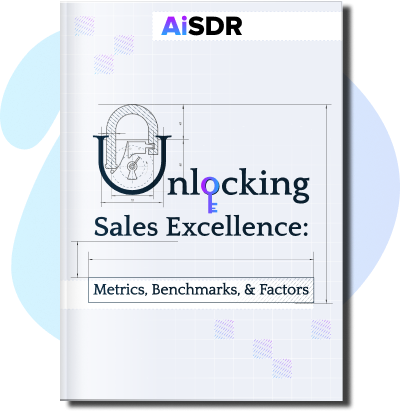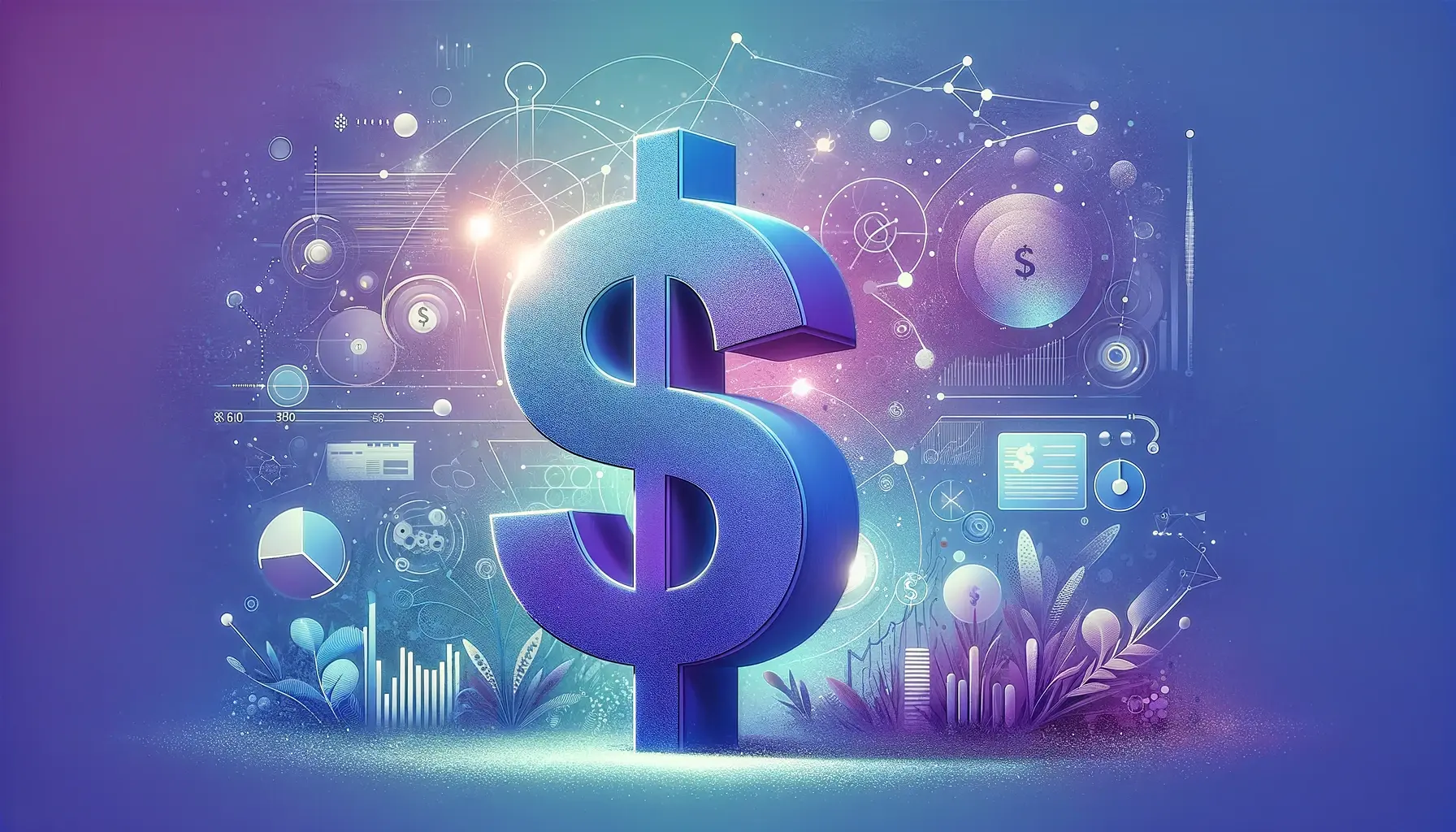What You Should Know About B2B Sales Processes: Features, Methods, and AI Tools

Learn about the B2B sales process from stages of the B2B funnel to tactics and AI tools
Selling to businesses is not as simple as peddling your wares directly to consumers. Your sales teams will need to buckle up for a long buyer journey that spans multiple decision-makers, relationships, and negotiations.
If you want your sales team to succeed, they’ll need effective strategies, easily replicable processes, and essential tech in their arsenal. Without them, it’s akin to having them go up a creek without a paddle.
For an effective B2B sales process, you’ll need to know not just what it is, but how to do it.
What is B2B sales?
Business-to-business sales refers to transactions between companies. In other words, B2B describes the process of one company selling a product or service to another company.
What makes B2B sales so challenging is that the sales process entails multiple decision-makers and a longer buyer’s journey than its business-to-consumer (B2C) counterpart.
What’s the difference between B2B and B2C?
B2B describes businesses selling to businesses. For B2C sales, instead of selling to other companies, businesses sell directly to consumers.
Here are the basic differences between B2B and B2C:
- Customer base – As mentioned above, B2C sells to consumers, while B2B targets other businesses or organizations.
- Sales cycle – B2C sales involve quick, straightforward transactions focused on prices, features, and benefits. The B2B sales cycle is far more complex, involving multiple stakeholders, complex requirements, and prolonged negotiations.
- Transaction volume – With B2C, businesses see a high volume of transactions of relatively low value, while those in the B2B industry deal with fewer sales of much higher value.
- Sales strategy – B2C is more transactional and focuses on addressing an individual’s needs, preferences, and pain points. The sales strategy for complex B2B sales processes involves dedicated account management, customized offerings, and a consultative approach.
- Marketing tactics – B2C marketing campaigns tend to be gimmicky, focusing on emotional appeals and price promotions. B2B campaigns are more protracted as they use a combination of push and pull marketing to build relationships and brand credibility.
Although B2B sales are much more complex than B2C, successful B2B has the potential for a much higher and more sustainable impact on your company’s bottom line.
Why are B2B sales essential for business prosperity?
B2B sales come with benefits that allow businesses to feed their bottom line without exhausting their resources.
Here’s how B2B can drive business growth:
- Higher revenues – B2B sales involve high-value transactions, so you can expect higher revenue per sales cycle.
- Longer-term relationships – A high lifetime value (LTV) can be expected for each customer since B2B sales are all about forging long-term relationships. Encouraging repeat purchases and loyalty also becomes easier.
- More accurate forecasting – In B2B sales, you deal with fewer customers. This means you can project demand more precisely and manage your supply better.
- Improved customer acquisition – You’re more likely to acquire new customers through tailored pitches enabled by B2B sales.
With B2B sales, you might be playing the long game, but you’ll be reaping huge rewards if you do it right.
What are some examples of B2B use cases?
Here are some common B2B sales examples. There’s a good chance that you’ve encountered one or several of them at some point:
Company-wide software
B2B companies can sell to businesses that need digital products to improve their operations. SAP, for instance, sells enterprise resource planning (ERP) software to help companies streamline their core business processes, including HR, finance, and supply chain.
Consulting firms or development teams
A B2B company may offer services that enable other companies to grow their business or bring their vision to life. Accenture is an IT consulting firm that helps companies reach their full potential with the right tech products or digitalization strategies.
Data analytics services
Some B2B companies specialize in helping businesses make sense of their fragmented data. For example, Genpact boasts a team of 10,000 data specialists, all geared up to turn data into business intelligence.
To succeed in B2B sales, you need sales reps who are adept at pushing decision-makers to finally make that purchase.
Who is a B2B sales representative?
A B2B sales representative connects with corporate decision-makers to build relationships and encourage the purchase of products or services. They take responsibility for revenue growth, profit generation, and relationship building.
B2B sales process
The B2B sales process is best described as a funnel – a customer-focused model that breaks the buyer’s journey into stages.
What is the B2B sales funnel?
The B2B sales funnel visually represents the path prospects follow from their first contact with your brand to their eventual conversion into paying customers. It enables the sales and marketing teams to track and nurture B2B sales leads until they finally make a purchase.
Businesses may use different formats of sales funnel. Let’s look at the one that goes beyond the purchase, showing you how to build loyalty with post-purchase considerations.
Awareness
At stage one of the sales funnel, prospects first hear about or interact with your product. This used to be the domain of the marketing teams. They attracted prospects with inbound marketing tactics like blog posting and search engine optimization.
Thanks to social media, sales teams are now in on the game. Your sales reps can actively stir conversations on channels where your target audience already hangs out.
Interest/Discovery
This is where you not only capture your prospects’ attention but you keep it. You don’t push for a sale just yet. Instead, you gently offer solutions that demonstrate value or solve the target buyer’s problems.
Instead of closing a sale, your marketing and sales teams will often focus on building connections with companies that satisfy your ideal customer criteria. This might entail sending out a series of informative emails, offering free ebooks, or hosting webinars.
Consideration
At this stage, your prospects are no longer just observing your brand and learning about the problems you might solve or the value you offer. They take a closer look at your product or service and consider how it might fit into their business or organization. Your leads can be considered warmed up and re-classified as marketing-qualified leads (MQLs).
Your teams must be prepared to provide case studies and discuss the features and benefits of your offerings.
Intent
This is a critical stage of the sales funnel. The prospects are no longer just taking a cursory glance at your products or services. They’re now demonstrating a serious buying intent.
It’s an excellent time to double down on a prospect’s growing interest with product-focused webinars, demos, or free trials.
Evaluation/Decision
The evaluation stage is when prospects are getting ready to make a final purchase decision. They’ve probably seen your demos and explored the case studies. By now, they already know just how much the product or service would cost. But they’re still weighing their options and shopping around for the best deals.
Your sales reps must be equipped with effective negotiation tactics and closing skills. Leveraging urgency, discounts, and attractive service-level agreements can come in handy.
Purchase
Now, here’s the most exciting stage – The part where you actually close the deal! The prospect officially converts into a paying client after a long B2B sales cycle.
The sales team must stay on top of the buying process, always ready to provide assistance and make the experience frictionless.
Post-purchase
Although the deal is now sealed, the job of the sales teams is not over. Early on, you should strive to retain the client and pave the way for repeat purchases. A seamless onboarding process is critical, as it leads to higher customer satisfaction and retention. In fact, 82% of businesses consider the onboarding process a crucial value driver that increases the worth of their product or service offerings.
Note that leads don’t always move down the B2B sales funnel in a linear way. They may enter and exit the funnels at different sales process stages. It’s the sales team’s job to keep qualified leads on the course or even convince those who have exited to hop back on the buyer’s journey. For that, you’ll need to get a handle on your lead generation.
What is B2B lead generation?
B2B lead generation is about identifying potential buyers and encouraging them to make a purchase. Your goal is to attract these prospects, bring them into the sales funnel, and nudge them along until they turn into paying customers.
Lead generation has the following stages:
- Prospecting – Sales prospecting involves identifying potential customers and adding them to a lead database.
- Engagement – Lead engagement is about connecting with potential customers who have interacted with your brand or shown interest in your product or service.
- Nurturing – Lead nurturing focuses on building relationships with the leads and communicating with them regularly until they move to the next stages of the sales funnel.
- Qualification – Lead qualification is the process of determining how likely or ready the prospects are to become paying customers.
- Optimization – Lead optimization involves techniques to nudge prospects down the sales funnel, including lead prioritization and scoring.
Once you’ve generated and warmed up a lead, your next task will be to keep them warm.
What are some effective B2B sales strategies?
B2B sales involve a lengthy, resource-intensive deal cycle. You can make your efforts count with these battle-tested strategies.
Targeted account-based marketing (AMB)
Account-based marketing is a B2B sales strategy that pours resources into specific target businesses. The sales and marketing teams engage in personalized campaigns geared at the unique features and pain points of the target accounts.
Thought leadership content
A B2B thought leadership content strategy entails creating and distributing high-quality content that showcases your expertise and establishes your organization as the industry leader. This means producing articles, podcasts, videos, webinars, and other types of content that provide insights and solutions that resonate with your prospects.
CRM and sales automation tools
You need tech tools to turbocharge sales operations. Customer relationship management (CRM) is particularly helpful for centralizing customer data and insights. It allows sales reps to easily find the information they need to keep conversations consistent and meaningful.
Customer 360 by Salesforce, for instance, can help your teams personalize various touchpoints along the customer journey.
Salespeople can delegate repetitive tasks to sales automation tools, freeing up more bandwidth for value-added services. For example, AiSDR can quickly sort the leads and nudge them down the sales funnel until they’ve booked a call with the sales reps.
Exceptional customer service
B2B sales entail a long process of wooing multiple decision-makers. Customer service must be exceptional not only to get them to make a purchase but to build a long-term relationship. You need to foster trust to maximize the clients’ LTV and compensate for the costs of winning them over.
The right tech tools will help you implement these strategies and streamline the entire sales process.
AI tools in B2B sales
Proper B2B sales enablement tools can accelerate sales, cutting costs and making your sales teams much more effective. The following AI-powered tools are just what you need.
AiSDR
AiSDR is an AI-powered sales tool that completes the tasks of a sales development rep faster and more efficiently. It speeds up the sales cycle while reducing operational costs.
Features
- Personalized email campaigns – Leverages AI technology to compose and automatically send emails based on sales objectives.
- Inbound and outbound marketing – Integrates your HubSpot or ZoomInfo account, sorts through your leads, and then propels them down the sales funnels with nurturing campaigns.
- Lead engagement – Learns from previous interactions and uses the insights to address prospects’ queries or doubts and convince them to book a call with your sales reps.
Pricing
$750 per month for 1,000 emails sent
ZoomInfo
ZoomInfo provides sales intelligence data that shows B2B companies which customers to reach and how.
Features
- Data-driven insights – Helps you target the right businesses using contact information, company data, and intent data sourced from the prospects’ search queries.
- Sales engagement – Provides analytics and insights to guide the scheduling of sales cadences or cold outreach sequences for connecting with prospects.
- Chat for sales – Uses a chatbot to automate interactions with prospects and shorten the sales cycle.
Pricing
Starts at $15,000 annually
Mailtastic
Mailtastic makes it easy to manage your employees’ email signatures and use them to display marketing banners.
Features
- Personalization at scale – Matches email signature campaigns with the right prospects, taking into account their interests, industry, and funnel stage.
- Data-driven marketing – Measures campaign performance and optimizes them in real time.
- Advanced targeting – Segments lead lists to optimize targeting and get more content impressions and engagement.
Pricing
Pricing is available upon request
Reachdesk
Reachdesk boosts engagement with data-driven gifting, allowing you to feed your pipeline with more leads and convert more prospects.
Features
- Demand generation – Generates more opportunities through personalized gifting that makes your emails stand out from the inbox clutter.
- Relationship building – Gains key insights about prospects, letting you woo key accounts with personalized gifts.
- Customer retention – Data-driven gifting helps you turn your existing customers into your biggest fans and advocates.
Pricing
Starts at $20,000 annually
Trumpet
Trumpet drives revenue by improving buyer journeys with personalized and interactive microsites.
Features
- Personalized microsites – Automatically creates personalized microsites with the appropriate brand identity.
- Buyer engagement – Provides valuable engagement insights and notifications as buyers visit and share your microsites.
- Buyer journey – Streamlines the buyer journey with a centralized repository for all related documents, use cases, demo recordings, and videos.
Pricing
Starts at $37 monthly
Hotjar
Hotjar tracks how users interact with your digital product to optimize user experiences and boost conversion.
Features
- Engagement heatmaps – Tracks user engagement with a heatmap showing how far users scroll down your site, the pages they visit, and the buttons they click. This way, you can remove friction and increase conversion.
- Recording user interactions – Records interactions so you can empathize with users, identify issues, and make relevant improvements.
Pricing
Starts at $32 monthly
Incorporating these tools into your daily operations will make your sales processes much more efficient and your sales reps much more productive.
Scale your B2B sales process using AiSDR
Due to its complexity, B2B can be far more challenging than B2C. At the same time, if you can unlock quality B2B deals, you’ll build a steadier stream of revenue than if you relied solely on individual customers.
In order to pursue profitable B2B opportunities, you’ll want to consider equipping your team with an AI sales tool that helps you scale your pipeline in a cost-effective manner.
As an end-to-end email outreach platform, AiSDR will nurture leads, hyper-personalize content, send follow-ups, and book meetings on full autopilot.
Book a demo to learn more about how AiSDR can assist you.
FAQ
What are the key features behind an effective B2B sales process?
An effective B2B sales process lets your teams track leads along a sales funnel. This makes it easier to nurture prospects and nudge them to become paying customers.
What challenges do companies face when striving for effective B2B sales?
B2B sales involve a long buyer journey and multiple decision-makers. Sales teams must be prepared to play the long game, practicing dedicated account management and building meaningful relationships.
What software should I use to automate B2B sales?
AI-powered sales enablement tools will help you automate tasks, streamline workflows, and reduce your sales teams’ workload. AiSDR, ZoomInfo, Mailtastic, Reachdesk, Trumpet, and Hotjar are some options worth exploring.











